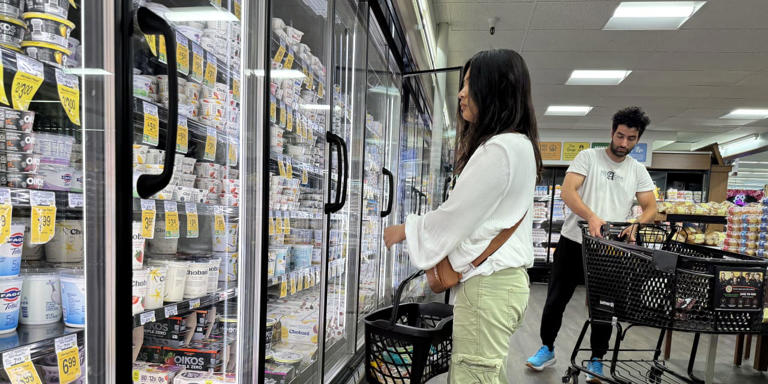The latest inflation report, which showed a flat Consumer Price Index (CPI) for May, may have brought a sigh of relief to Wall Street investors, but for American consumers, concerns about rising prices continue to dominate household finances. According to the latest quarterly survey from TransUnion released on Wednesday, an overwhelming 84% of respondents identified inflation as their top financial worry in the second quarter, marking the highest level of concern since the credit-reporting bureau began tracking this metric two years ago.
Despite the CPI data indicating a slight easing with an annualized inflation rate of 3.3% in May, down marginally from 3.4% in April, consumer anxiety remains palpable. Charlie Wise, head of global research and consulting at TransUnion, underscored the persistent gap between economic metrics and everyday consumer experiences. “Consumers often conflate inflation, which represents the rate of change in prices, with the absolute prices they pay,” Wise explained in a pre-release interview. This confusion is amplified when recent price increases in essential goods such as groceries and gasoline are still fresh in consumers’ minds, overshadowing broader economic trends.
The resilience of consumer price sensitivity was highlighted in the Federal Reserve’s Beige Book survey, which documented businesses contending with resistance from price-sensitive customers. Major retailers like Target, Walmart, and Amazon have responded by implementing selective price reductions in an effort to lure cautious shoppers back into stores. Meanwhile, the CPI report for May offered some reprieve with stable grocery prices and a notable decline in gasoline costs by 3.6% from the previous month, although year-over-year figures still indicated a modest increase.
Despite these nuances, consumer sentiment remains firmly anchored on immediate financial pressures. A significant 30% surge in food prices since 2020, as reported by economic analysis firm TS Lombard, underscores the tangible and recent impact of inflation on household budgets. This acute focus on current price levels rather than the inflation rates scrutinized by economists reveals a disconnect between high-level economic data and personal financial realities.
While surveys like TransUnion’s provide a comprehensive snapshot of consumer sentiment, other economic indicators such as consumer confidence have shown tentative signs of improvement. The Conference Board’s consumer confidence index rebounded in May, buoyed by positive perceptions of job market conditions following robust job creation figures.
However, despite positive economic indicators, consumer sentiment remains cautious. Mark Hamrick, senior economic analyst at Bankrate, noted, “Consumers may not yet feel relief from elevated prices, but they benefit from a resilient job market and wage gains that have outpaced recent inflation rates.” Nevertheless, as Wise cautioned, the prevailing sentiment among consumers suggests a broader acceptance that higher costs may persist as a lasting reality, even as inflationary pressures show signs of moderation.
In conclusion, while economic metrics point to stabilization, consumers’ apprehensions about inflation persist, driven by recent price hikes and ongoing economic uncertainty. The challenge ahead lies in aligning economic optimism with consumer confidence amidst evolving market dynamics and persistent cost pressures.
